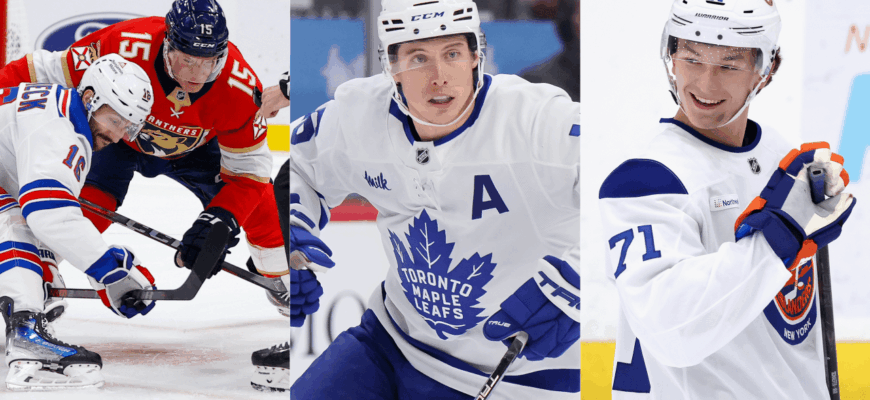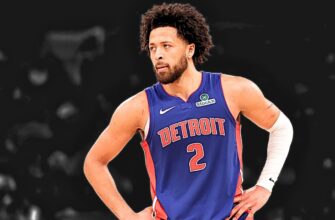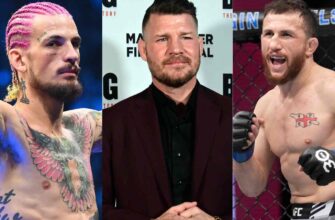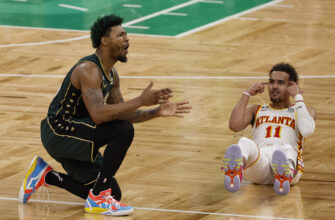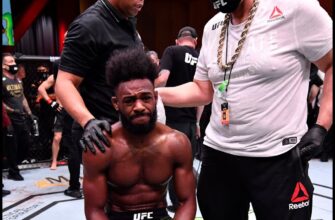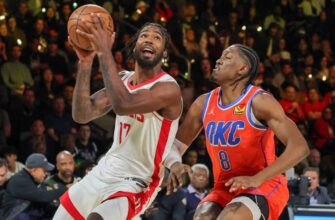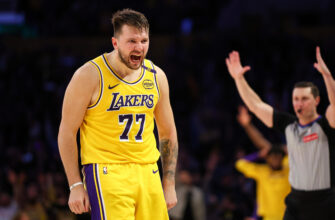As the NHL preseason draws to a close, anticipation builds for the regular season, set to commence on October 7.
The previous season, 2023-24, presented numerous instances of performance regression, and many individuals highlighted in last year`s analysis experienced notable declines. Prominent examples include Auston Matthews, Sam Reinhart, Jonathan Marchessault, Zach Hyman, and the Vancouver Canucks, all of whom saw significant dips in their play from the season before. This does not preclude a potential rebound in the upcoming season, however.
This analysis identifies players most susceptible to a production decrease of 10% or more, either in goals or points, due to various circumstances. A primary indicator for such a decline is an unsustainably high shooting percentage, as many players discussed here performed significantly above their typical rates. Additional considerations include anticipated changes in player roles, shifts in team dynamics, and tougher opposing matchups.

Morgan Geekie
LW, Boston Bruins
Morgan Geekie`s career-best shooting percentage before last season stood at 13%, yet in the 2024-25 campaign, it soared to an extraordinary 22%. This elevated performance, combined with his role on Boston`s top offensive line, propelled him to a remarkable 33 goals, almost double his prior career high of 17. It is highly improbable he will replicate such a feat in consecutive seasons.
Geekie experienced a surge in goal scoring, an expanded role within the Bruins` lineup, and an increase in offensive zone starts from 12.1% to 19.1%. Data from MoneyPuck indicates his 5-on-5 on-ice goals percentage reached 58% compared to an expected 52.7%. Considering the team`s overall situation, a regression in these statistics is anticipated.
Should Geekie maintain his position on the top line alongside an elite scorer like David Pastrnak, his goal output is more realistically projected to align with that of a complementary player, likely falling between 22 and 26 goals, rather than surpassing the 30-goal mark again. While Geekie will remain a crucial asset for the Bruins, securing significant top-line ice time, this also entails facing more formidable opponents. Playing on the top line offers little opportunity to avoid tough matchups, resulting in less space and time to operate, which should lead to a decline in goal production.

Mark Scheifele
C, Winnipeg Jets
Mark Scheifele enjoyed an outstanding 2024-25 season, accumulating 39 goals and 87 points. In all campaigns where he recorded 38, 39, or 42 goals, his shooting percentage hovered around 20%, notably three percentage points above his career average. Furthermore, his ability to score over 10 power-play goals in these seasons suggests this area is a prime candidate for regression.
Last season saw Scheifele achieve a personal best of 25 power-play points. Although he is still expected to contribute approximately 20 points on the man advantage, the departure of Nikolaj Ehlers from the top power-play unit will undoubtedly affect a unit that was previously the NHL`s most efficient. Even with Ehlers, replicating a 29% power-play success rate would have been improbable; without him, it becomes even more so.
A anticipated decline in power-play efficiency, coupled with an expected dip in shooting percentage, suggests Scheifele`s production could settle around 30 goals and 77 points. While these numbers still represent solid top-line center performance, a more than 10% overall regression and nearly a 25% drop in goal scoring would mark a significant step down from his exceptional 2024-2025 season.

Aliaksei Protas
LW, Washington Capitals
The 2024-2025 season saw several Washington Capitals players achieve remarkably high statistics, with Aliaksei Protas` performance being particularly noteworthy. The imposing 6-foot-6, 247-pound forward truly excelled last season, more than doubling his previous point total and astonishingly scoring 30 goals, a massive leap from his prior career best of six. Protas` career high shooting percentage before last season was 8.8%, but it surged to an unsustainable 21.1%. MoneyPuck data indicates he netted 8.3 goals above expected across all game situations.
While his shot undoubtedly improved considerably, a 21% shooting percentage is unsustainable. Even his teammate, Alex Ovechkin, widely regarded as one of hockey`s all-time greatest shooters, posted an 18.6% shooting percentage last season. This disparity alone suggests substantial regression for Protas. Assuming he is genuinely an 11-12% shooter, a more realistic goal tally for him would be approximately 20 goals, representing a 33% reduction from his last season`s impressive total.
Furthermore, Protas failed to register any power-play goals. With Alex Ovechkin still a dominant force, the 24-year-old is unlikely to receive significant shooting chances on the power play, a situation that, to be fair, applies to most of his Capitals teammates. Protas possesses immense talent and his breakout last season surprised many opponents. However, this element of surprise will be absent in the upcoming season, and he will encounter more challenging matchups as teams become more cognizant of his offensive capabilities. He is more realistically projected as a power winger capable of 55-60 points, rather than exceeding 65 points.

Brandon Hagel
LW, Tampa Bay Lightning
Brandon Hagel`s reputation significantly escalated following his performance at the 4 Nations Face-Off, despite having already delivered three consistent seasons of strong offensive play for Tampa Bay. Hagel is a formidable presence for the Lightning and a dangerous shorthanded specialist, registering seven points on the penalty kill last season, which constituted nearly half of his career total of 16 short-handed points. While he stands as one of the NHL`s premier penalty killers, a similar level of offensive output while shorthanded is improbable to recur.
His 90-point season certainly garnered significant attention across the NHL, notably achieved with a relatively sustainable 15.4% shooting percentage. Hagel is expected to skate on the second line alongside Anthony Cirelli, another proficient two-way forward. Although he is still anticipated to maintain close to a point-per-game pace, it`s improbable he will hit 90 points in this role without substantial ice time alongside Brayden Point and Nikita Kucherov. His underlying talent suggests a 75-80 point player, which is exceptional for a second-liner, but implies an expected production drop of almost 15%.

Mark Stone
RW, Vegas Golden Knights
Mark Stone, consistently ranked among the NHL`s top two-way wingers, faces several challenges heading into the current season. Primarily, he has participated in over 60 games in only three of the last ten seasons. While COVID-19 impacted some of those years, it is undeniable that Mark Stone`s health history makes him an unreliable presence. Despite an unusually healthy run last season, he still only played 66 out of 82 games, registering 67 points. At 33 years old, and with a history of recurrent back injuries, these issues are unlikely to dissipate with advancing age.
Furthermore, Stone has justifiably relinquished his position alongside Jack Eichel, largely due to the high-profile acquisition of Mitch Marner by the Golden Knights. This move will reduce Stone`s even-strength opportunities with one of the league`s premier centers, although he is still expected to feature prominently on the top power-play unit.
The projected regression stems from Stone`s persistent injury concerns, a reduced role on the second line, and the notable downgrade from playing with Eichel to William Karlsson, which alone could account for a 10% dip in even-strength offensive output. Considering all these elements, it seems improbable that Stone will achieve a second consecutive season of 65-plus points. Nevertheless, if he were to remain entirely healthy and play all 82 games for the first time in his career, he is still projected to reach approximately 68 points.

Matt Duchene
C, Dallas Stars
Matt Duchene is anticipated to primarily serve as the Dallas Stars` third-line center this season, a role rarely associated with an 82-point performance. While he is still likely to receive power-play minutes, his assignment to the third line, behind Roope Hintz and Wyatt Johnston, will inevitably restrict his ice time and offensive chances. Moreover, Duchene`s 19.7% shooting percentage last season was the second-highest of his career, significantly above his career average of 13.6%. Given his reduced opportunities, reaching 150 shots this season is not guaranteed. When factoring in an expected decline in his shooting percentage, a projection of 21 goals and 40 assists, though commendable for a third-line player, represents a clear drop from his point-per-game output in 2024-2025.
Age also works against Duchene. Based on typical age-related performance curves, a production decrease exceeding 20% would not be unexpected, even irrespective of his ice time or offensive opportunities. The 34-year-old remains highly skilled, but it appears that the natural decline associated with aging eventually affects everyone, with rare exceptions like Sidney Crosby and Alex Ovechkin. He is poised to be one of the NHL`s top bottom-six forwards, yet it is challenging to foresee him replicating his impressive offensive production from the previous season.

